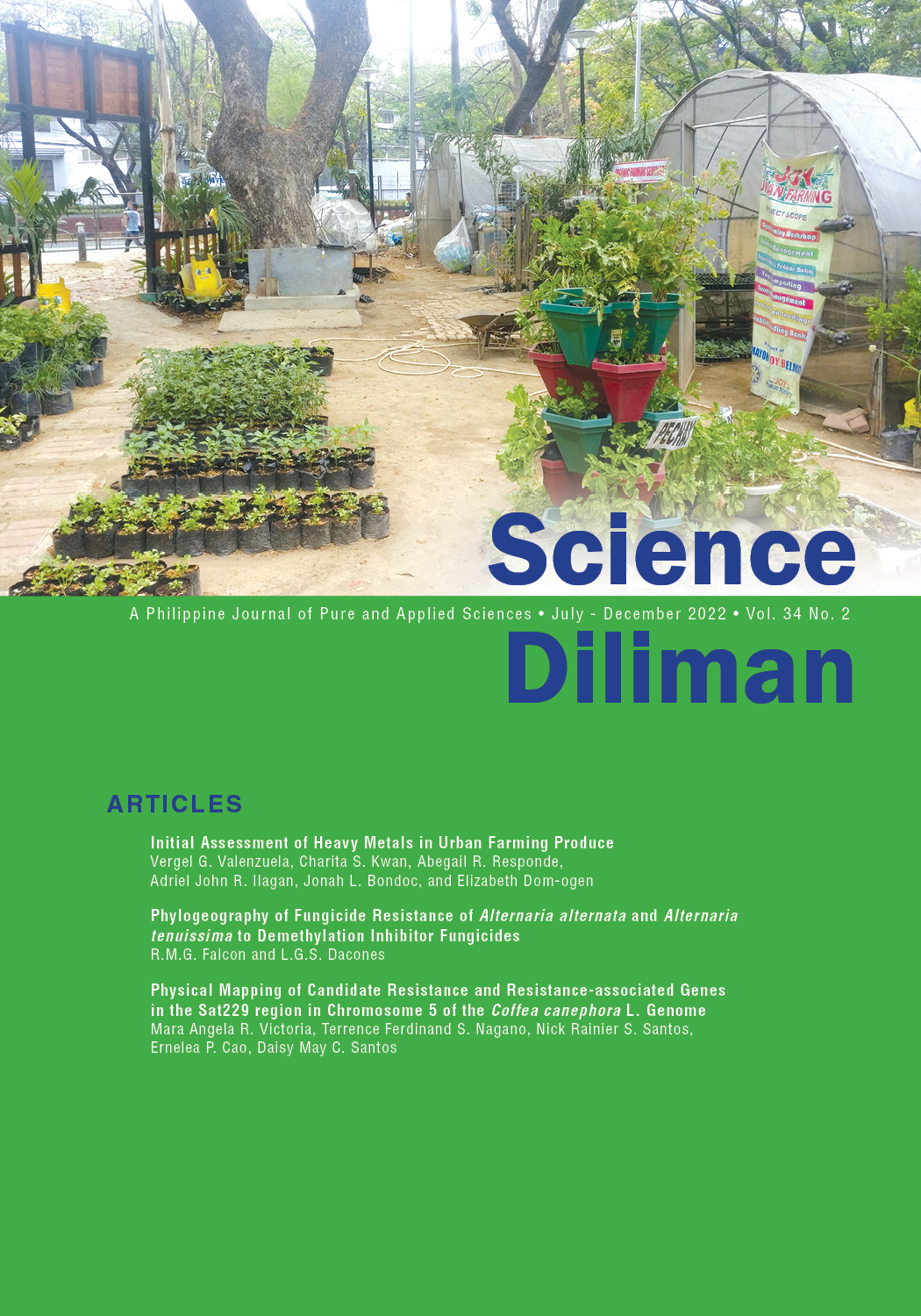Phylogeography of Fungicide Resistance of Alternaria alternata and Alternaria tenuissima to Demethylation Inhibitor Fungicides
Abstract
Demethylation inhibitors (DMI) fungicides are commonly used to mitigate fungal diseases in crops by inhibiting ergosterol biosynthesis. Alternaria alternata and Alternaria tenuissima are fungal plant pathogens being controlled with DMIs. However, with unregulated use of fungicides, reports on reduced sensitivity to DMIs have been documented in these fungal species. Previous studies have shown the accumulation of point mutations in CYP51 and CYP61 genes that are involved in ergosterol biosynthesis to the development of resistance to DMI fungicides. Understanding the phylogeographic trends of isolates based on the DMI gene targets is critical to identify sustainable management strategies against fungicide resistance. In this study, a phylogenetic approach was used to determine the association of geographic origin of isolates with fungicide resistance across A. alternata and A. tenuissima isolates. Phylogeographic and haplotype analyses revealed genetic patterns in CYP51 and CYP61, associated with DMI resistance. Generally, clusters formed within specific geographic areas such as Asia and North America. Moreover, nucleotide variation estimates revealed the presence of polymorphic nucleotide bases in response to DMI exposure as a selection pressure. These results provided insights in further testing in vitro assays regarding the selection patterns associated with specific regions



